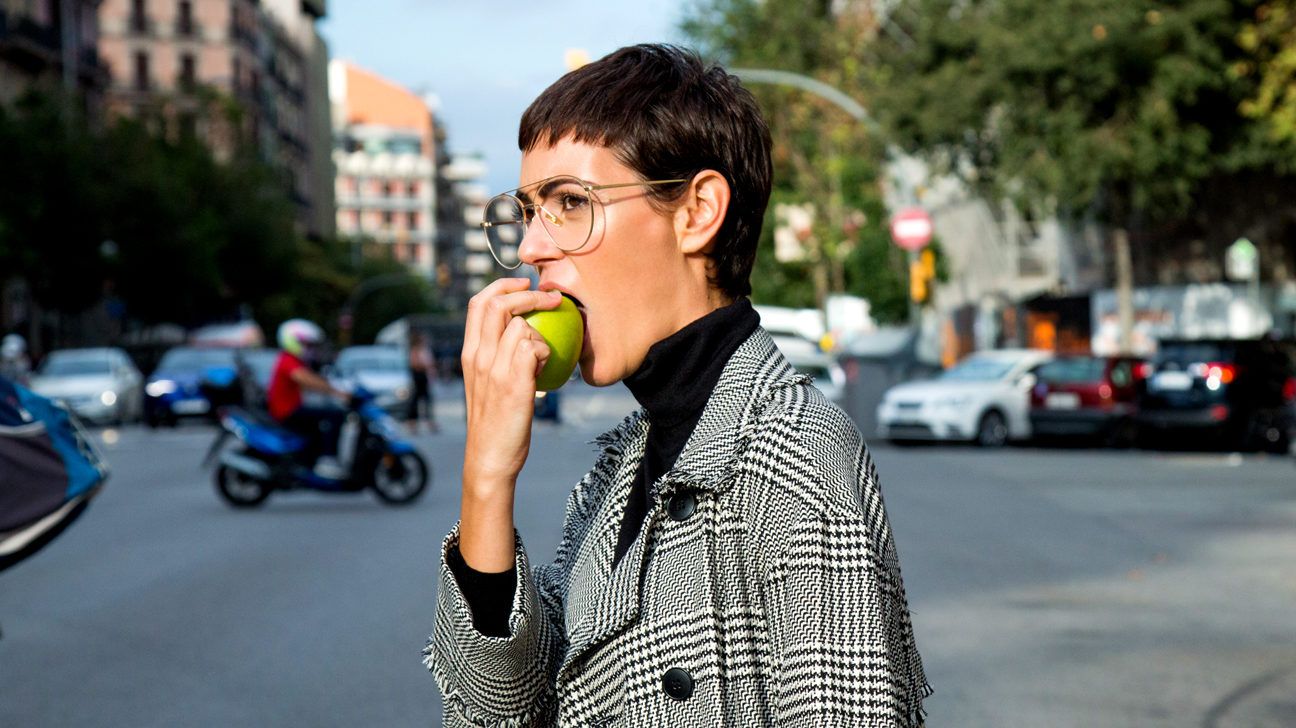We include products we think are useful for our readers. If you buy through links on this page, we may earn a small commission. Here’s our process.
Greatist only shows you brands and products that we stand behind.
Our team thoroughly researches and evaluates the recommendations we make on our site. To establish that the product manufacturers addressed safety and efficacy standards, we:- Evaluate ingredients and composition: Do they have the potential to cause harm?
- Fact-check all health claims: Do they align with the current body of scientific evidence?
- Assess the brand: Does it operate with integrity and adhere to industry best practices?
Apples are a nutritious superfood for everyone — not just people with diabetes. Also, we’re pretty sure they’re the most naturally portable snack.
With diabetes, it’s extra important to keep track of macronutrients — like carbs, fats, and proteins — since they can all affect your blood sugar.
Here’s how apples stack up, nutritionally, and why they should be a staple in your diabetes-friendly diet.
One medium apple contains:
- 97 calories
- 23 g carbs (20 percent of which are fiber)
- 8 mg vitamin C (14 percent of the recommended daily value)
- 85 percent water
Tell me more…
Not all carbs are created equal. Notice that nearly 20 percent of the carbs in apples are from fiber. Fiber is really good for you because it slows down the absorption of sugar, preventing blood sugar spikes.
Fiber also keeps you feeling full for longer and aids healthy digestion by keeping things, ugh… moving.
Which is the fairest of them all?
Overwhelmed by the 2,500 different varieties of apples grown in the U.S. alone? We’re with you.
Fortunately, there are no “bad” apples, but flavor is a factor. For example, green Granny Smith apples are known for their tartness, while red-skinned Fuji apples are known for their crispy sweetness.
While all apples are healthy, the Granny Smith, Fuji, Red Delicious, Gala, and Honeycrisp varieties are higher in antioxidants than Empire and Golden Delicious, for example.
No matter which variety tempts you, be sure to eat the skin, which is a primary source of nutrients — more on that in a second. Just remember to wash your produce before chowing down.
Apples contain polyphenols, which are plant-based compounds known to protect against type 2 diabetes and cardiovascular disease.
Polyphenols also slow down the absorption of sugar into the bloodstream, preventing rapid increases in blood sugar.
What’s more, most of the sugar found in apples is fructose, which has very little effect on blood sugar.
All of this contributes to apples’ low score on both the glycemic index (GI) and glycemic load (GL) — tools for measuring how much a food affects blood sugar.
People with diabetes have one of two types.
- With type 1 diabetes, the pancreas does not produce enough insulin, a hormone that sends sugar from your blood to your cells.
- With type 2 diabetes, the body produces enough insulin, but the cells are not utilizing it properly. This is called insulin resistance.
Apples are a diabetes-friendly superfood because those polyphenols found in the apple skin have shown to have beneficial effects on improving the body’s ability to utilize insulin effectively.
This helps your cells absorb sugar and provide energy. So, eating apples regularly may reduce insulin resistance, leading to lower blood sugar levels. As if they weren’t already the apple of our eye!
bottom line:Plant compounds found in apples may help reduce insulin resistance and improve insulin sensitivity.
The apple doesn’t fall far from the tree, so if you have a family history of diabetes, you’ll want to do what you can to prevent developing it yourself.
A 2013 study found that eating whole fruits regularly (specifically apples, blueberries, and grapes) was significantly associated with a lower risk of type 2 diabetes.
What do these fruits have in common? They contain anthocyanins, a type of flavonoid with antioxidant properties that’s responsible for the lovely red, purple, and blue colors found in those fruits.
And here it’s appropriate to compare apples to oranges — eating citrus fruits, melons, and strawberries was not associated with a lower risk of type 2 diabetes.
Not super excited about snacking on apples? Try the apple challenge! This video teaches you how to eat an apple like a boss.
Other tips for enjoying apples (and doing so responsibly):
- Chop an apple into slices and toss them into a lunchtime salad with nuts and bleu cheese.
- Make that apple into a dessert by simply adding a scoop of peanut butter.
- Stick to one medium-size apple, since larger portions will have a higher glycemic load.
- Check your blood sugar after consuming apples to know how they affect you. You’ll want to space out your fruit intake to keep blood sugar levels stable. Also, it’s always a good idea to pair fruits like apples with a healthy protein or fat such as nut butters, nuts, or seeds.
- Avoid drinking apple juice, prepackaged apple sauce, and dried apples; just stick to whole apples. Processed fruit can have lower fiber content and higher sugar content, including, in some cases, added sugars (eek!).
Apples are a good snack choice for maintaining healthy blood sugar levels and reducing the risk for type 2 diabetes. If you’re counting carbs, be sure to note that one medium apple contains about 23 grams of carbs.
Lastly, be sure to check your blood sugar after consuming all foods to understand exactly how they affect you personally. Need a place to start? Amazon has several blood glucose monitors to choose from in order to do this with ease.
So get out there and enjoy some apples! And for best results, never hold your tongue while asking for one.


